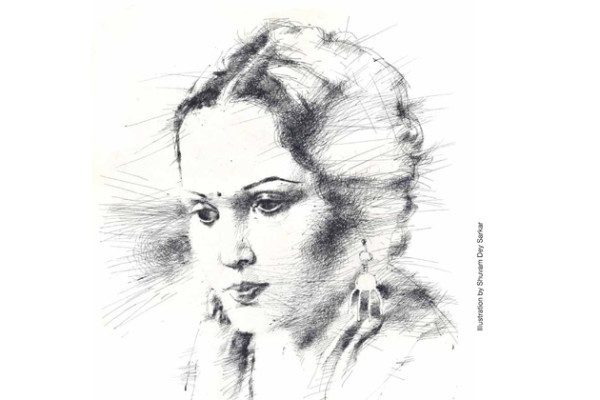Pratiti Ganatra explains how the humble octothrope won the Internet.
Let us go back in time a little. It is early 2009 and the world has just woken up to social media. Facebook, YouTube and Twitter are still in the nascent stages of growth, each a few years old. And the octothorpe is just another symbol used sparingly to denote a number or denote weight in pounds.
It is now 2015. The octothorpe has become one of the most widely used symbols on the World Wide Web, a re-invention that not many saw coming. “We haven’t seen a typographical resurrection like it since the @”, writes Tim Dowling in a piece in The Guardian.
The history of this particular symbol is quite an interesting one. It has been called by a variety of names, which include the octothorpe, number, hash, crosshatch, pound, diamond, mesh, splat, square, hex, crunch, tic-tac-toe and the pigpen. In Shady Characters: The Secret Life Of Punctuation, Symbols & other Typographical Marks, Keith Houston explains how sometime around the 14th century, the abbreviation “lb” for the Roman word libra pondo (meaning pound weight) altered to the ‘#’ due to the hurried writings of the scribes. The symbol’s amalgamation into technology, however, can be traced back to the mid-1960’s, when Bell Laboratories included both the ‘#’ and ‘*’ on standard American typewriters.
Sometime around the 14th century, the abbreviation “lb” for the Roman word libra pondo (meaning pound weight) altered to the ‘#’ due to the hurried writings of the scribes.
But how did this seemingly innocent and largely unused symbol become the talk of the town? Before becoming a Twitter sensation, the hashtag was used in internet relay chat as a title for the channels—#Technology would be a channel for people wanting to discuss technology, and so on. However, it was on 23 August 2007 that Chris Messina, a tech expert who had been using the IRC for a long time, suggested that Twitter adopt the hashtag practice to make it easier for users to streamline discussions and search topics they were interested in. Three days later, Stowe Boyd called the ‘#’ a hash tag in a blog post. The name stuck, and the rest is history.
It took Twitter a couple of years, and numerous successful campaigns such as #AskObama and #SanDiegoFire to formally adopt the use of hashtags into code and in July 2009, they automatically began to hyperlink terms appended with the # symbol. Very soon, ‘Trending Topics’ showed up on the Twitter homepage, and there has been no looking back. The symbol has now been adopted by multiple social media platforms, including Facebook, Instagram, YouTube, Tumblr and Flickr.
Hashtags have become the most popular way of categorising content on social media and allow finding relevant information from multiple sources. The symbol has been elevated to a level where it is being seen as one of the most essential marketing and communication tools for a business. Some companies had earlier disregarded them because they reminded them of an immature tool used by teenagers to gain popularity (read likes, retweets), but slowly and surely, the hashtag is becoming an integral part of all marketing agendas. According to research done by Buddy Media, one hashtag alone can increase engagement by about 100%. Most businesses chose to develop brand-specific hashtags, which are unique to their business and these are not just advertised on the Internet. Most television commercials and newspaper ads now contain brand- or company-related hashtags.
The recent success of the Budweiser campaign during the Super Bowl is an excellent example of this. They aired a television commercial and urged viewers to submit suggestions via twitter, using the hashtag #clydesdales to help the brand come up with a name for the Clydesdale foal shown in their ad. The campaign was a huge success, and the brand received massive exposure through this exercise.
A recent campaign that went viral on a global scale was the #IceBucketChallenge. Started by Pete Frates, a former Boston College baseball player who has Amyotrophic Lateral Sclerosis (ALS), this challenge soon had celebrities, politicians and business leaders taking up the challenge and also nominating others to do the same. It soon turned into a mass movement to raise awareness and funds for the disease, and in a short span of time the ALS association amassed huge amounts of money for research and development.
The hashtag also received a lot of love from the music industry where artists began including it in song and album titles. The first to try this were the not-so-popular Oakland-based hip hop duo Wallpaper, whose ‘#Stupidfacedd’ sold around 80,000 copies (Nielsen Soundscan). The trend soon caught on, and Atlanta-based rappers Rich Kidz released an album in which each track title was preceded by a hashtag. Will.i.am’s most recent album was titled #willpower. Mariah Carey, Busta Rhymes and Jennifer Lopez notched it up and came up with song titles that were already popular hashtags—‘#Beautiful’, ‘#TwerkIt’ and ‘#LiveItUp’, respectively. Before the songs released, they already had an online presence in terms of the hashtag. In a Billboard article, William Gruger points out how “upon its May 8 release, use of the ‘#liveitup’ hashtag on Twitter spiked from an average of 500 uses a day to 22,000, an increase of 4300%.”
William Gruger points out how “upon its May 8 release, use of the ‘#liveitup’ hashtag on Twitter spiked from an average of 500 uses a day to 22,000, an increase of 4300%.”
The proliferation of hashtags in our lives, in everything from television shows, commercials and advertisements to movie promotions, easily reveal the significance and influence they have secured today. But the question remains, what next? With the rapid advancement in technology and the way we use it to gain maximum advantage in a minimum time frame, one can only wonder, where the next big thing that will impact the Internet will come. Will it be a user-driven initiative, much like the hashtag, or will it be an invention from the power corridors of the technology giants?


